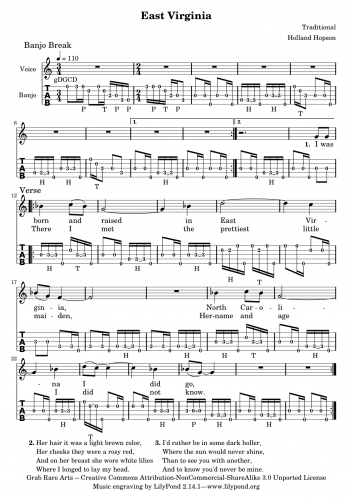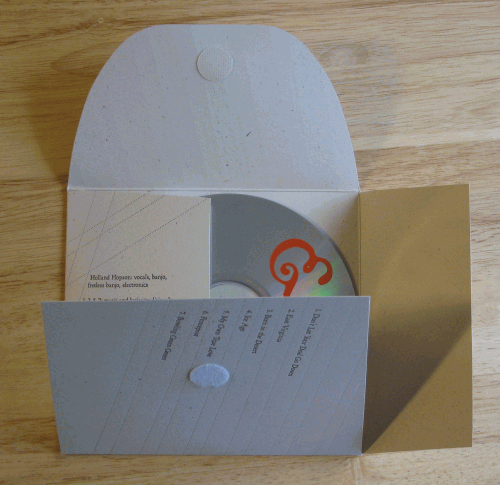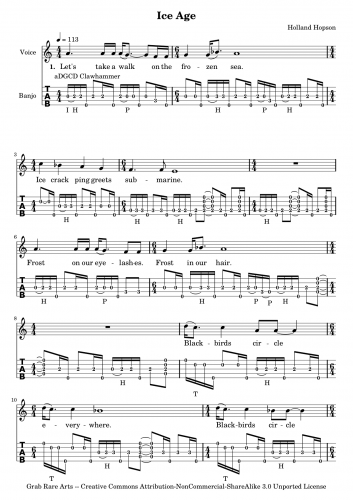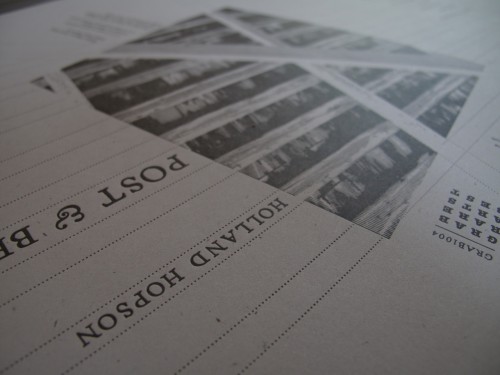This month’s score from Post & Beam is My Own True Love.
Download the score as a pdf file: my-own-true-love.pdf
Download the score as a Lilypond .ly file: my-own-true-love.ly
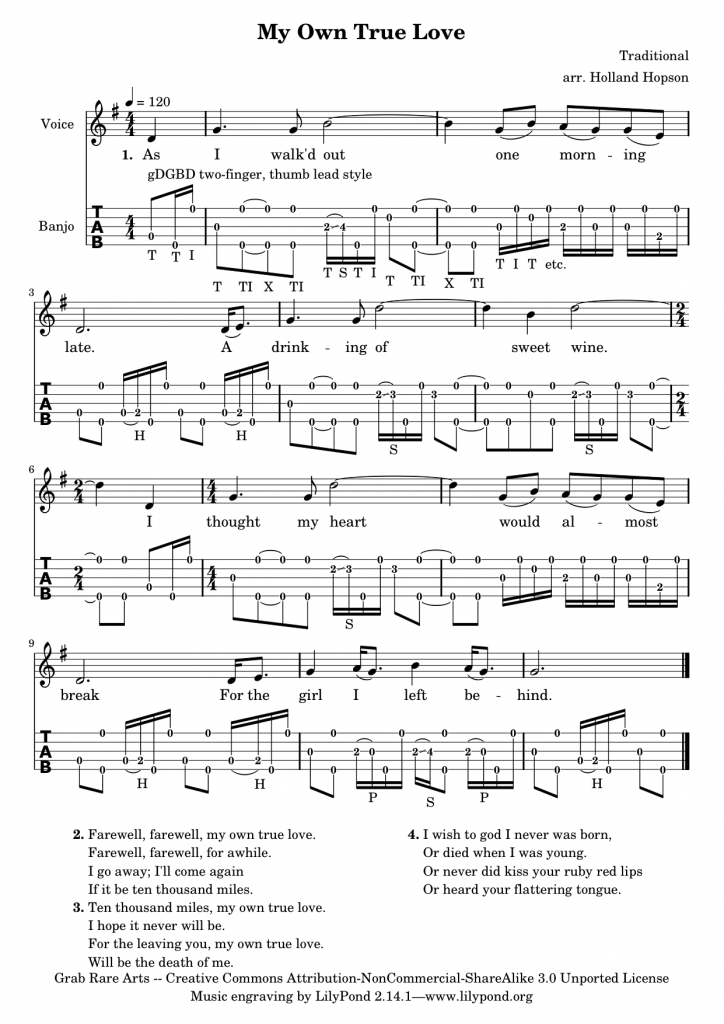
Notes on My Own True Love
- I found this melody in John and Alan Lomax’s Our Singing Country. I worked out the two-finger, thumb lead banjo part to highlight the double drones of the first and fifth string. The vocal style is haunted by the ghost of Roscoe Holcomb.
- The electronics part uses an FFT freeze frame technique to create an evolving texture by extending a single frame of audio from the banjo (and sometimes voice). Applying pressure to force sensitive resistors mounted on the head and neck of the banjo changes the amplitude contour of the FFT synthesis, making the resulting sound smoother or spikier.

